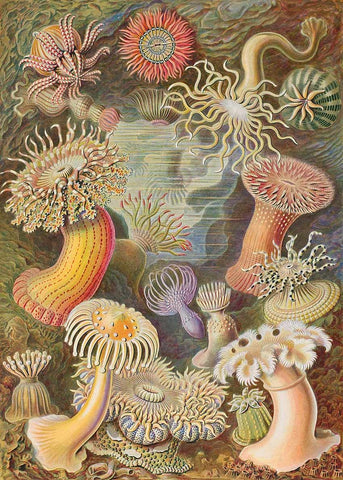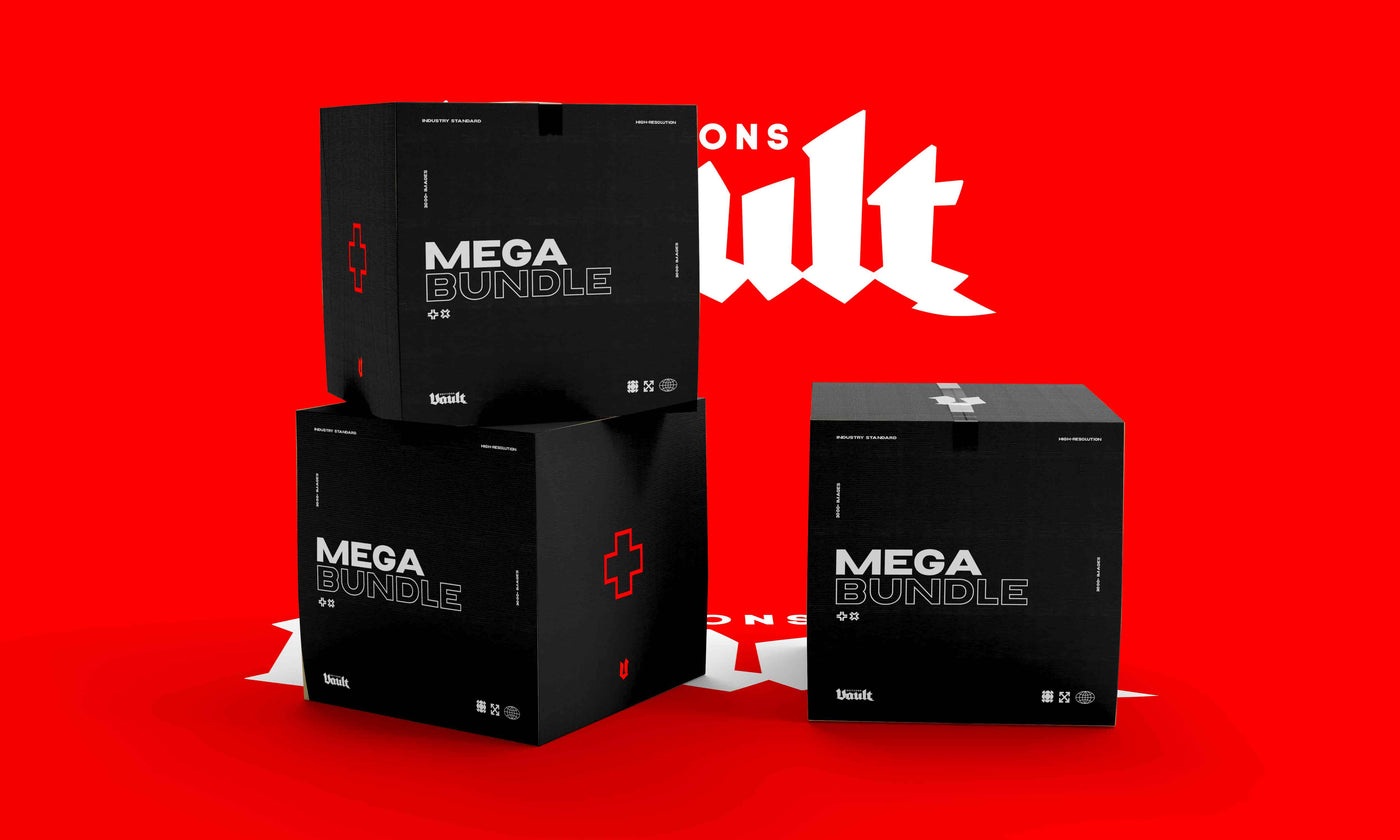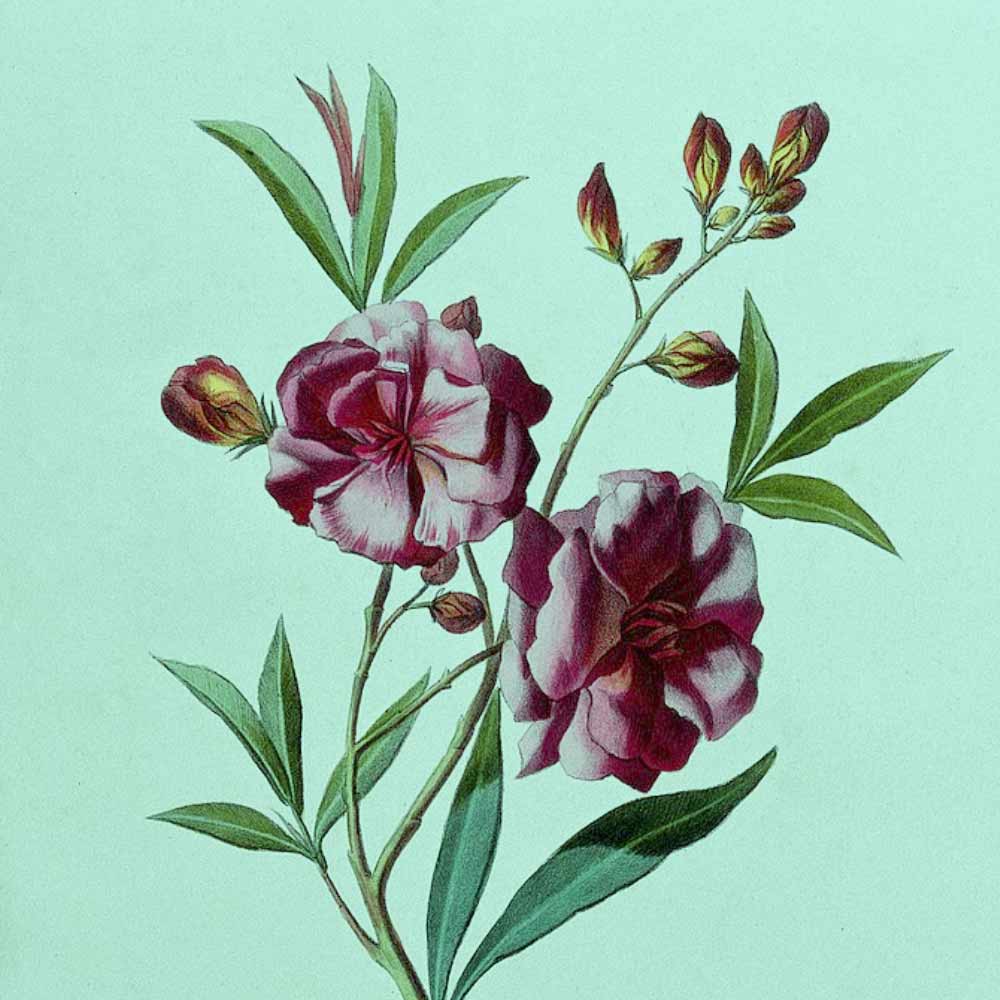We're taking a deep dive into five amazing marine species featured in Ernst Haeckel's 'Art Forms in Nature', read on to learn more about these fascinating subjects and enjoy the stunning illustrations.
Ascidiae
There are approximately 3,000 types of Ascidiae, or Sea Squirts. These marine invertebrates get their nutrients by filtering food from the surrounding seawater. They open their oral siphon to let in water which feeds into the branchial sac. The sac is lined with a mucus net, which filters suitable foods like microalgae. Waste and water are expelled through the atrial siphon. Adult Sea Squirts attach themselves to solid surfaces like coral or rock and grow between 0.5-10 cm.
Sea anemones
Sea anemones take their name from the terrestrial flower, anemone. They feed by trapping passing prey in their tentacles and restraining it with their nematocysts (capsule-shaped cells with a (usually) poisoned thread designed to pierce their target before it is thrust into their mouths. Sea anemone's lips stretch and can fit sizable prey, including crabs, molluscs, sea urchins, and small fish. They are close relatives of corals, jellyfish, tube-dwelling anemones, and Hydra.
Chaetopoda
Chaetopoda aka Spined Marine Worms live in sea or freshwater and inhabit a range of environments. You'll find them tucked under rocks on ocean shores, swimming freely or burrowed in algae, mud, sandy mud and sand. Some marine worms, such as the giant tube worm, dig tubes to live in. This species can also live near underwater volcanoes and will happily endure temperatures up to 90°C (194°F). Marine worms are at the bottom of the food chain and can be carnivores, herbivores or parasites.
Discomedusae
Discomedusae is a subclass of jellyfish which contains approximately 155 named species; researchers believe there are many more to be identified. There are two orders of discomedusae - Rhizostomae and Semaeostomeae.
Semaeostomeae are large jellyfish with four long, frilled oral arms and eight tentacles. Some semaeostomids are suspension feeders that capture food particles suspended in the water. Other members of this species will supplement their diet with prey, including small fish, crustaceans, worms, and jellyfish.
Rhizostomae have eight oral arms instead of tentacles. The oral arms fuse to create the central organ known as the manubrium. As of 2007, there were 97 different species of Rhizostomae. All of the jellyfish fished commercially for use by humans come from this order. Jellyfish are eaten as a delicacy and prepared in traditional medicine predominantly in Asia and are especially popular in Japan.
Decapoda
Decapoda or decapods (meaning 'ten-footed') are an order of crustaceans which include many well-known groups, such as crabs, lobsters, crayfish, shrimp and prawns. It is estimated that this order contains nearly 15,000 species. Almost half of these species are crabs, shrimp account for about 3,000 species, and 2,500 species of crustaceans, including hermit crabs, porcelain crabs, and squat lobsters, comprise the rest. Most decapods are scavengers and eat prey killed by other animals or organisms who have died from reasons that are not predation.
What is 'Art Forms in Nature'?
Art Forms in Nature is a collection of illustrations of animals and sea creatures by Ernst Haeckel (16 February 1834 – 9 August 1919), a multi-disciplined biologist, professor, naturalist and morphologist. A talented artist, his immensely detailed works influenced and entranced scientific and artistic audiences. Ernst Haeckel discovered thousands of new species, coined key scientific terms such as ecology and stem cell, and was an ardent follower of Charles Darwin's theory of evolution being driven primarily through natural selection. He held views promoting scientific racism and Social Darwinism that we do not endorse.
Originally published in sets of 10 between 1899 and 1904,
Kunstformen der Natur, known in English as
Art Forms in Nature, consists of 100 masterfully executed prints of microorganisms, animals, insects and more. This body of work has since become widely acclaimed for its beauty and biological accuracy. It was highly influential throughout 20th-century art, design and architecture and has inspired many artists, particularly throughout the Art Nouveau period, including Karl Blossfeldt and Émile Gallé.
The plates within this publication reflect Haeckel's interest in symmetry, levels of organisation and the evolution of biological complexity. The subjects featured were carefully selected by Haeckel to highlight and illustrate this. From the complex geometric patterns and forms of Amphoridea to the ornamental symmetry of jellyfish and microorganisms, the composition of each plate is carefully considered and arranged for maximum visual impact. Featured prominently throughout the set of 100 plates are sea anemones, radiolarians, Aspidonia and a stunning collection of Siphonophorae. It includes various renderings of radiolaria and was admired by Charles Darwin, who said, ''It is one of the most magnificent works which I have ever seen, & I am proud to possess a copy from the author.''
Interested in learning more?
Get
Art Forms in Nature in
paperback or
eBook.
Each publication comes with a unique download code providing you with instant access to high-resolution files of all 100 plates. Print them out and create beautiful decorative artworks for your home and office, or get creative and make stunning collages and mixed-media artworks. You can even incorporate them into your graphic design projects and take your work to the next level.










